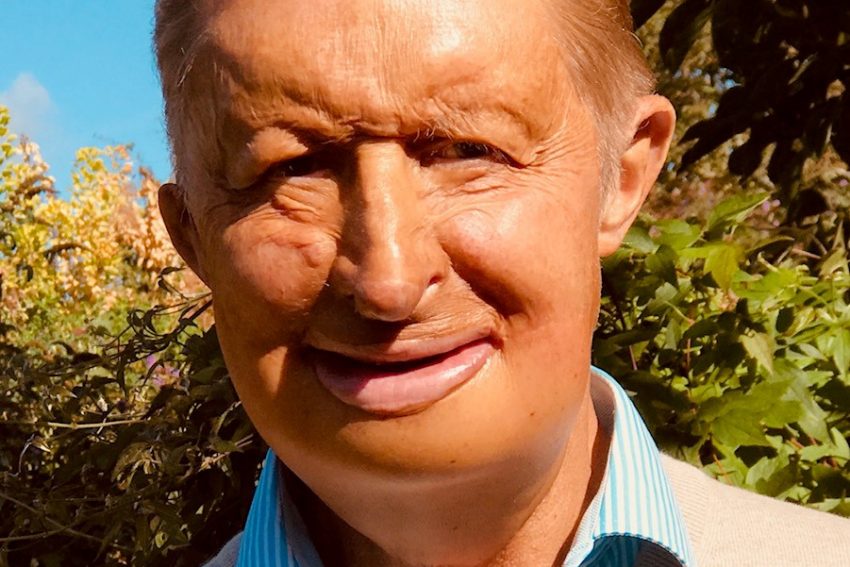
Blog post from James Partridge, Director of Face Equality International
Framing the face — in a multi-dimensional frame, please…
As far as I am aware, there have been very few inter-disciplinary research projects focused on the human face — perhaps the Future Face exhibition in 2004 at the Science Museum curated by Prof Sandra Kemp came closest in encouraging many contrasting and inter-connecting perspectives: the evolutionary, biological, basic science, anatomical, surgical, psychological and artistic (to name a few!).
A very eclectic and thought-provoking array of artefacts, images and articles from pre-history looking right into the next millennium were assembled — and, happily, Changing Faces had a small but significant pitch with our early posters displayed, one of which was of a man’s face with a complex birthmark over one eye with the epic line: “Hello. Nice to meet you. How are you? Now you try it.”
I was reminded of that exhibition as I prepared to take part in the launch event of the About Face project because ‘framing the face’ brought to mind portraiture — and how lucky we were to have Lucy Burscough’s highly insightful paintings of facial cancer patients to view at the launch. I decided to show some of Henry Tonks’ pastels of WW1 soldiers who endured the pioneering facial surgery and oral scaffolding of the famous dentist-cum-ENT-surgeon-cum-plastic surgeon, Harold Gillies. And photos of Les Gueules Cassées, the French association of facially-injured veterans and, of course, the reconstructing faces of the fighter pilots of Archibald McIndoe’s Guinea Pig Club.
The surgical techniques developed in those years meant that those injured in other wars like Vietnam and Afghanistan were given another chance… people like me, injured in a trivial car fire in 1970, and many many others with other facial conditions — such as cleft lips and palates, cranio-facial syndromes, facial cancer and paralysis — could be offered somewhat less noticeable facial looks. And, let us not forget, those techniques have also evolved to become the daily bread-and-butter methods of the cosmetic surgery industry, now a multi-billion-pound phenomenon worldwide.
So, the history of ‘modern’ facial reconstruction is really only just over a hundred years’ long (although earlier surgery had its successes too). Patients who consent to face transplantation are taking ‘a leap into the dark’ as the Royal College of Surgeons’ report of 2006 described it just as those who ended up at Queen Mary’s Sidcup in Gillies’ care did or at the Val de Grace in Paris [do watch the video ‘The Officers’ Ward’ set in that hospital if you haven’t]. And plastic surgery in the future? Safer transplants, 3-D scaffolding, stem cells… who knows? The specialty has great ingenuity but most plastic surgeons also acknowledge its aesthetic limits.
All this is going on as life in today’s incredibly visual culture is increasingly face-focused… we live in a ‘perfect-face’ culture more than ever before. And that poses great hazards for anyone with a ‘less-than-perfect face’. The 1990 observation by Frances Cooke Macgregor1, the American social anthropologist who followed Vietnam veterans with facial disfigurements back into their communities is arguably even more true today: “people with disfigurements experience a loss [or lack] of the civil inattention that most people take for granted”.
Learning how to manage that successfully is no cake-walk. It took me years2. The pro-active social skills programmes which Changing Faces invented and were proven effective by researchers like Nichola Rumsey, Alex Clarke3 and Alyson Bessell4 need to be made much more widely available.
With the pressures of social media to contend with, the hype of cosmetic surgery all around and the nasty stereotypes of Hollywood villains in the background (sometimes foreground), daily life is far from straightforward and often downright unpleasant. Staring, intrusive comments and trolling seem to be almost the accepted norm. Hate crime legislation hardly touches them. Never has there been such a pressing need for more of the public education evident in that poster: “Now you try it.”
So, my hope is that the About Face project encourages new inter-disciplinary efforts not only to enable surgical advances but also to re-ignite the psycho-social interventions designed to empower people with facial disfigurements of any cause to face their futures confidently, negating the stigma they are bound to face. And gives further impetus to public awareness/education efforts to ensure the prejudice-free social inclusion of people with distinctive faces… which is the ultimate goal of the campaign, soon becoming a global movement, for face equality (like race equality).
- FC Macgregor (1990) ‘Facial disfigurement problems and management of social interaction, implications for mental health. Aesthetic Plastic Surgery 14(4) 249-57
- Partridge, J. (1990 and 2012). Changing Faces: the Challenge of Facial Disfigurement. London: Penguin and Changing Faces. Available from JP on james.partridge@faceequalityinternational.org
- Alex Clarke et al (2014) CBT for Appearance Concerns. Wiley Blackwell
- 30. See also www.faceitonline.org.uk which was very successfully evaluated in this study using an RCT methodology
Face Equality International: www.faceequalityinternational.org
